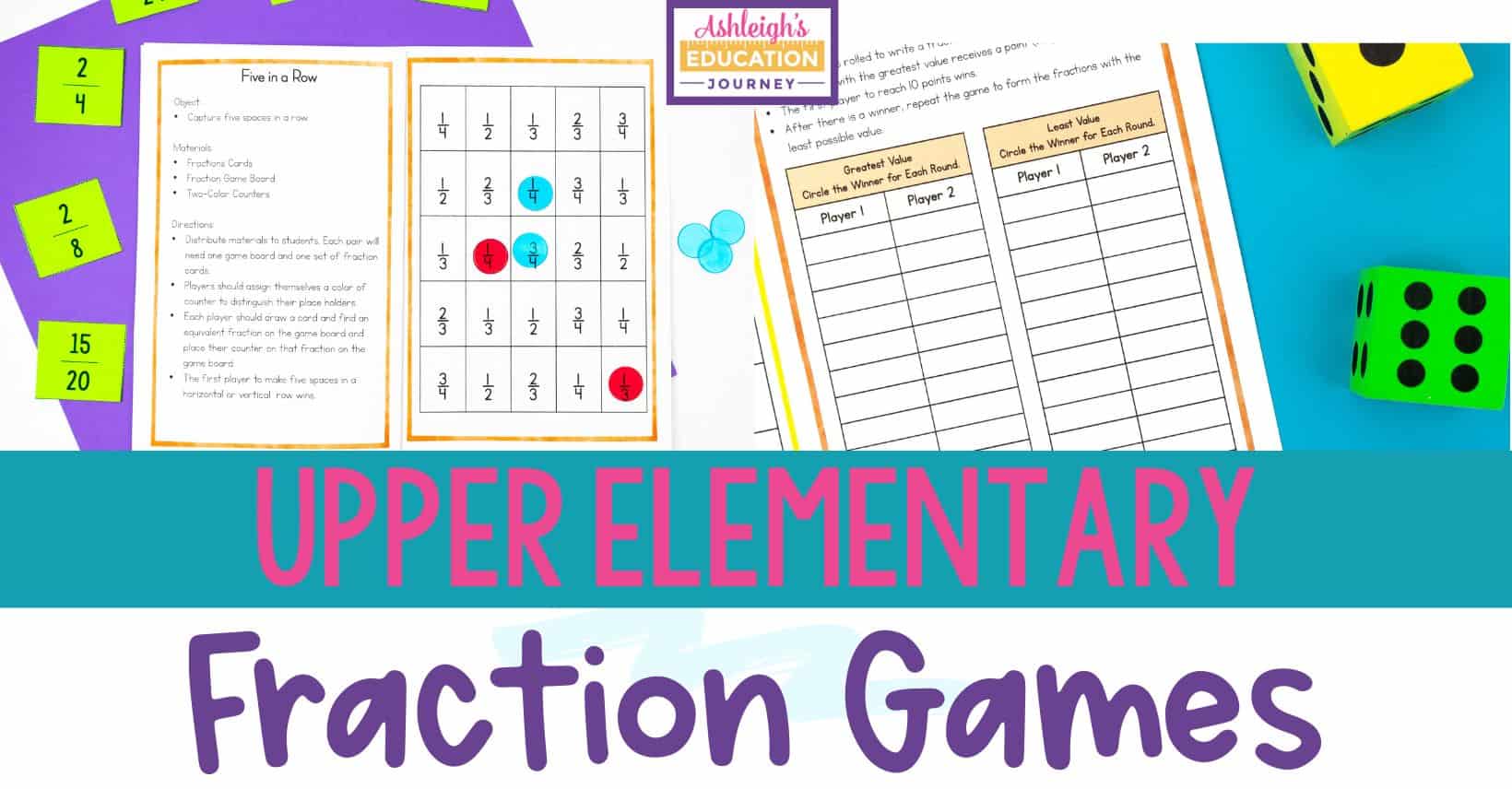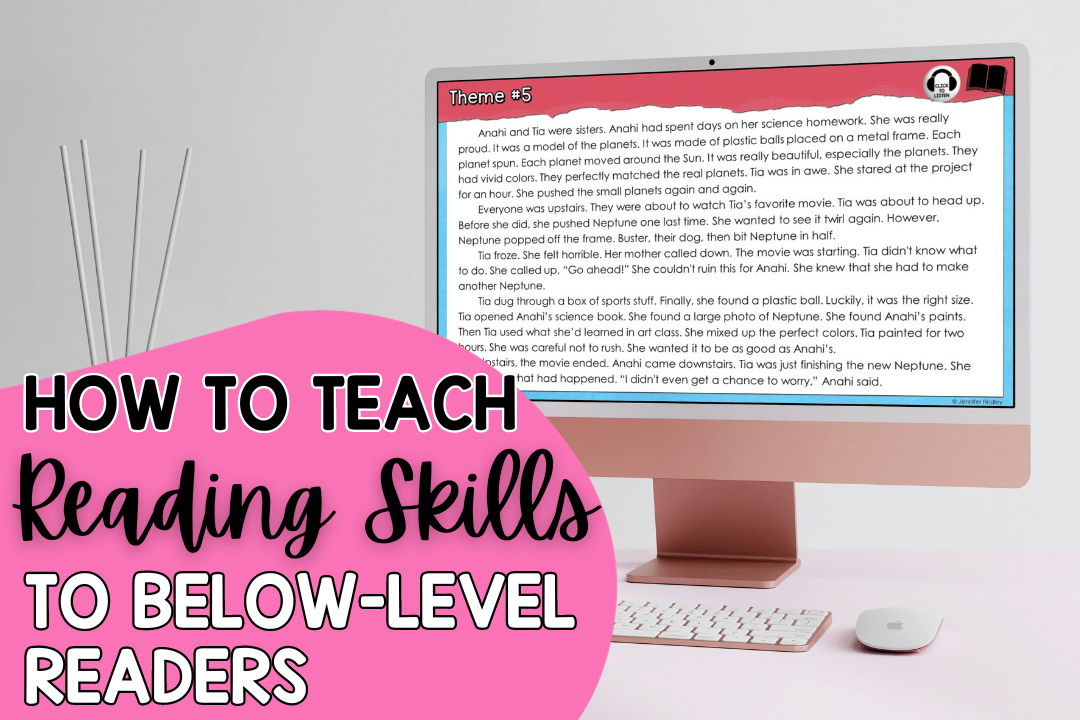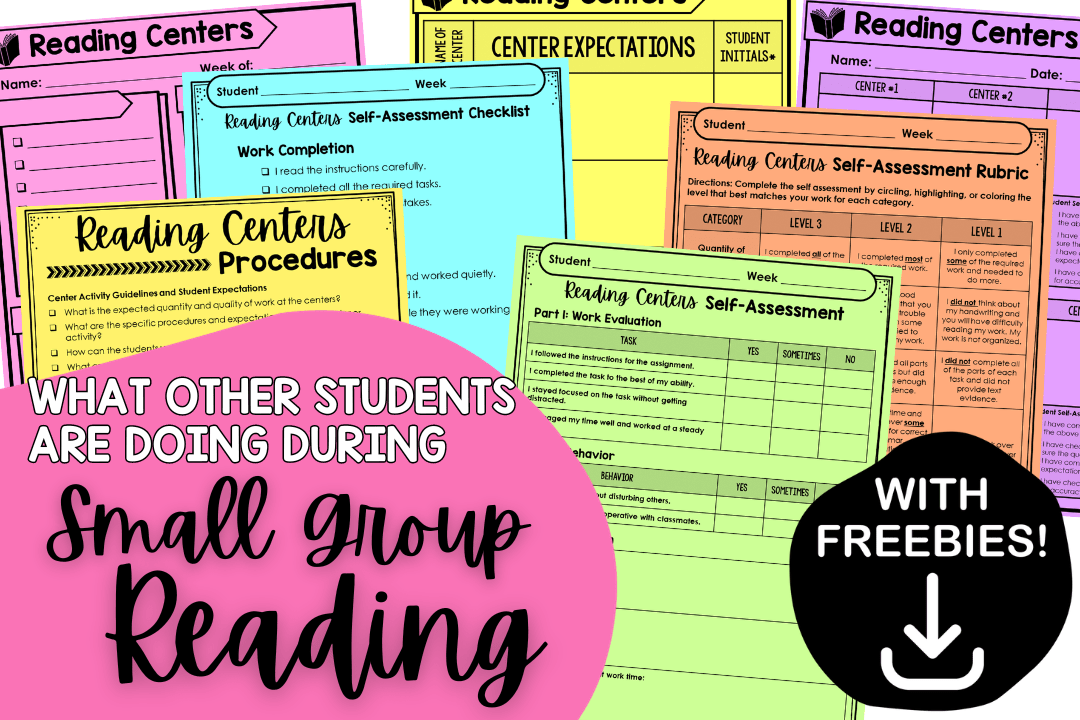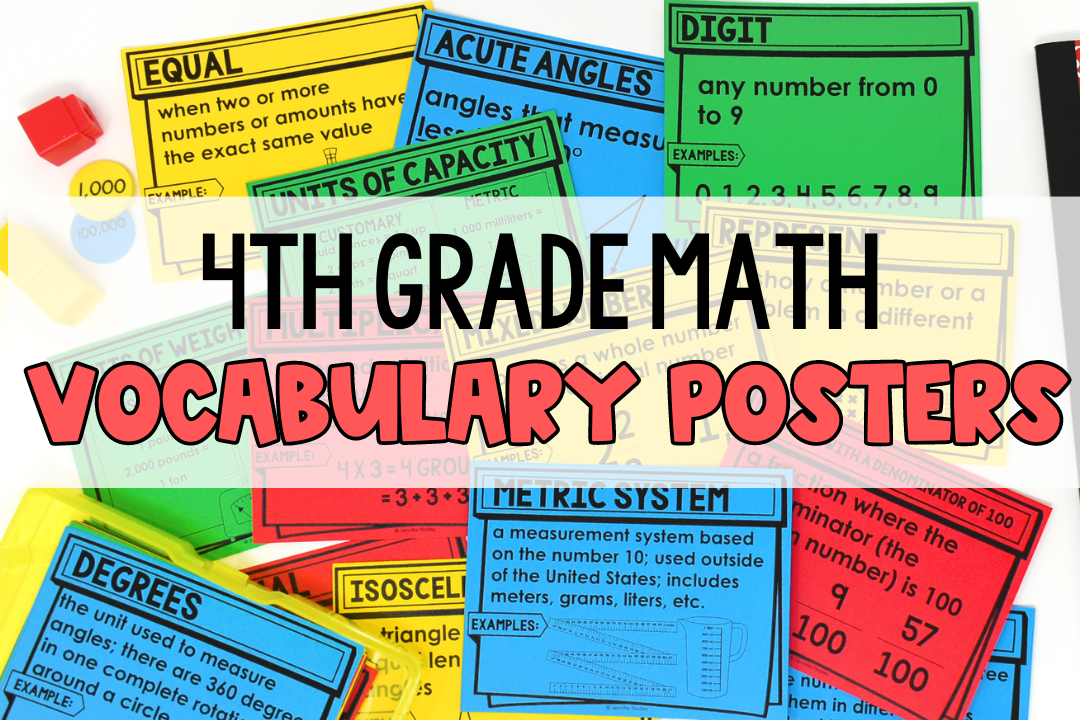When I think back to how I taught fractions my first few years of teaching, I wish I could go back and apologize to my former students. Yes, I taught the necessary lessons and my students appeared to understand fractions, but I didn’t appreciate the importance of giving students time to develop fraction sense. I saw it as just another math unit to finish.
As my understanding of how students learn math grew, I realized that I was not teaching fractions at the depth needed for students to develop deep fraction sense that allows them to become flexible thinkers. Over time, I refined my instruction to the point that fractions are almost always my students’ top scoring domain in any standardized test. Even more importantly, my students love working with fractions.
I’ve written many blog posts on teaching fractions. The articles range from fraction basics, to comparing fractions, equivalent fractions, and computation with fractions. In this post, I’ve shared some of my favorite fraction games.
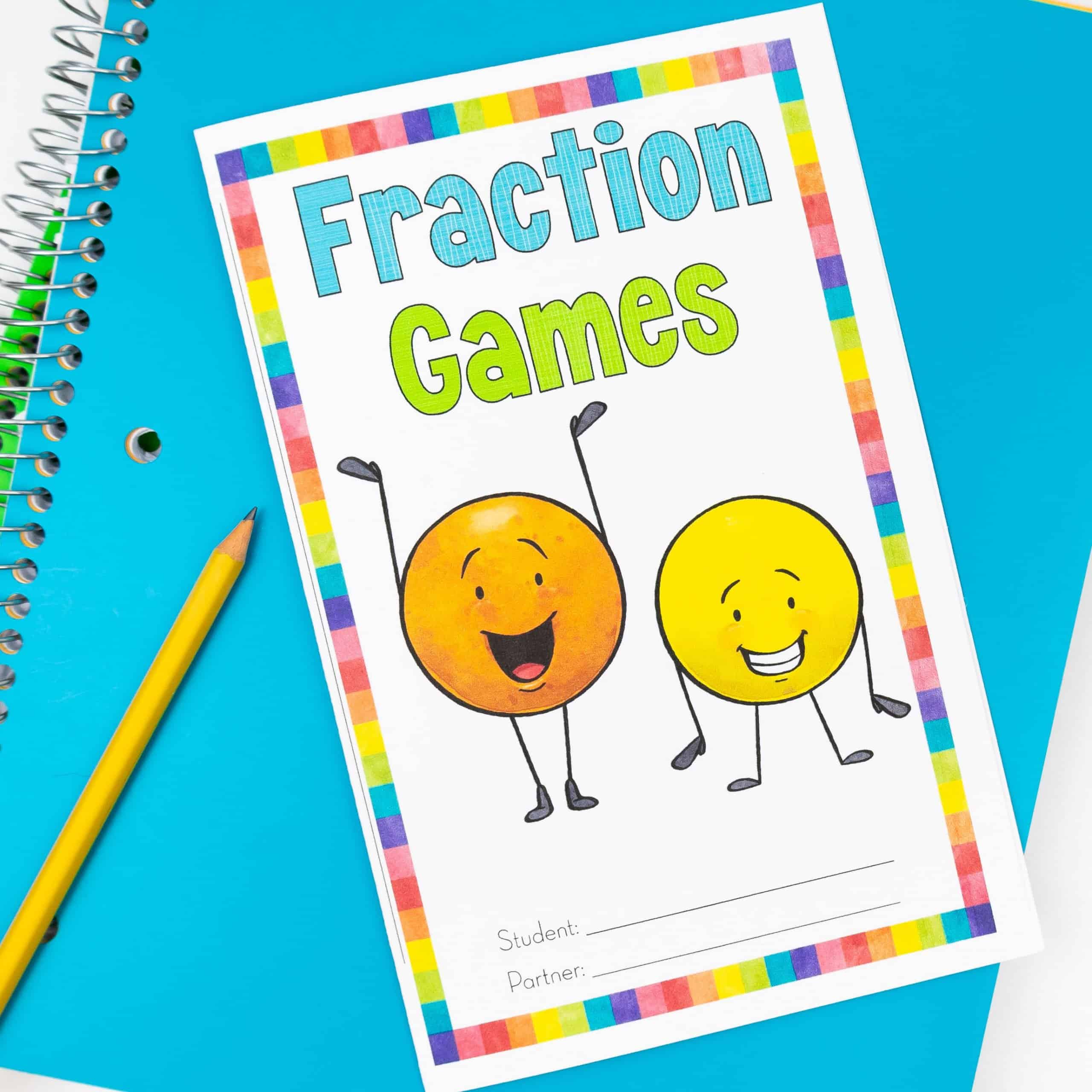
There really is no one right or wrong way to incorporate math games in the classroom. We all know that what works for one group of students doesn’t always work for a different group of students. In all parts of education, there is rarely ever a one-size-fits-all solution.
Math Centers
One way to incorporate math games in your instruction is through math centers. You can easily add games to your existing math centers. The first time I tried centers, I failed miserably and knew that they were not for me! I eventually tried again and found what worked for my classroom.
I implemented math centers during the framework of my already existing math block, so I didn’t have to carve out extra time for math centers. Math centers became part of my students’ work time. I also recognized that it wasn’t feasible (for me) to implement centers every day, and that was okay! You can read more about how I implemented math centers here.
Whole Group Games
Whole group games can be fun and effective too! For me, the biggest drawback is that I have to prepare materials for all students or groups, rather than only one set of materials for centers. I’m careful to keep all the materials organized, so that it’s prepped, I don’t have to do it again!
You can make a short game part of your math mini lesson. If you have a longer more complex game, you could have students play the game with partners or in a small group during their math work time. The possibilities are really endless.
Extension/Enrichment/Early Finisher
You can also make math games part of your extension or enrichment for early finishers. I have a larger class than usual this year, and I’ve found this to be very effective with large groups. After students complete their assignment for the day, they are able to play a math game.
This keeps students engaged with meaningful and purposeful activities, and it gives me flexibility to continue meeting with small groups while students are playing the game.
Let’s get to the fun stuff-the games! As you read, keep in mind that all of these games are available to you as an awesome freebie!
Fraction Duel
This game is a spin on the card game War that gives students the opportunity to compare fractions. Students draw a fraction card and compare the two fractions. The students whose fraction has the greatest value wins that round.

Order Up
This game reviews ordering fractions. Each player should draw two cards and place them face-up. from lesser to greater value. Then, without looking at the card, both players draw a third card and predict whether the third card is going to be less than both cards, greater than both cards, or in the middle of the two cards. They place the facedown card in the predicted correct location, so, if correct, the cards are in order from least to greatest. If the prediction was correct, the player gets a point
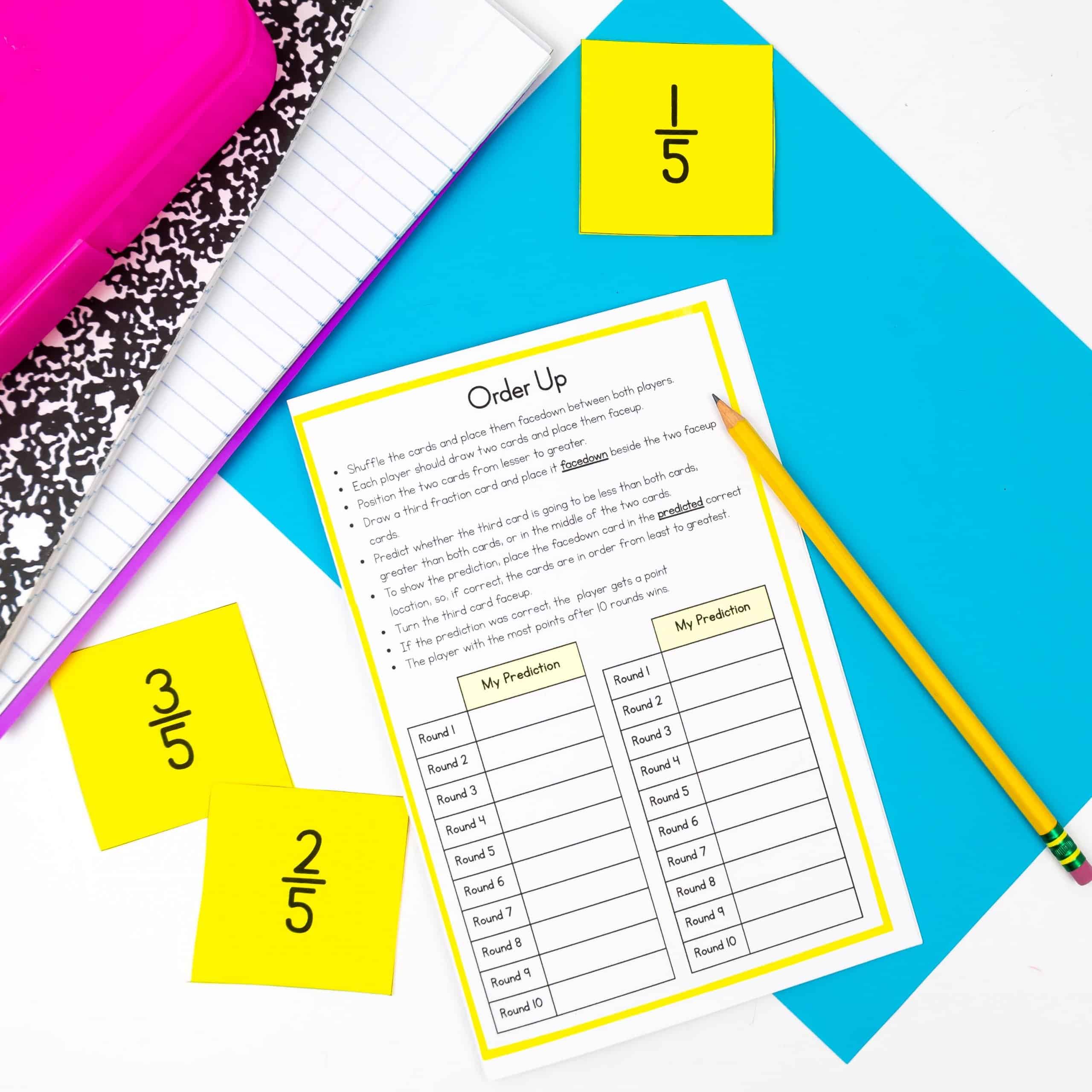
Make a One
The goal of the game is for students to use as many cards as they can during each round to get as high a score as possible by adding fractions to equal one whole. Students score one point for each number in the numerator or denominator position. Since my fourth graders don’t work with uncommon denominators, I set the rule that add denominators must be like numbers. However, if I were teaching fifth grade, I would probably change that rule!
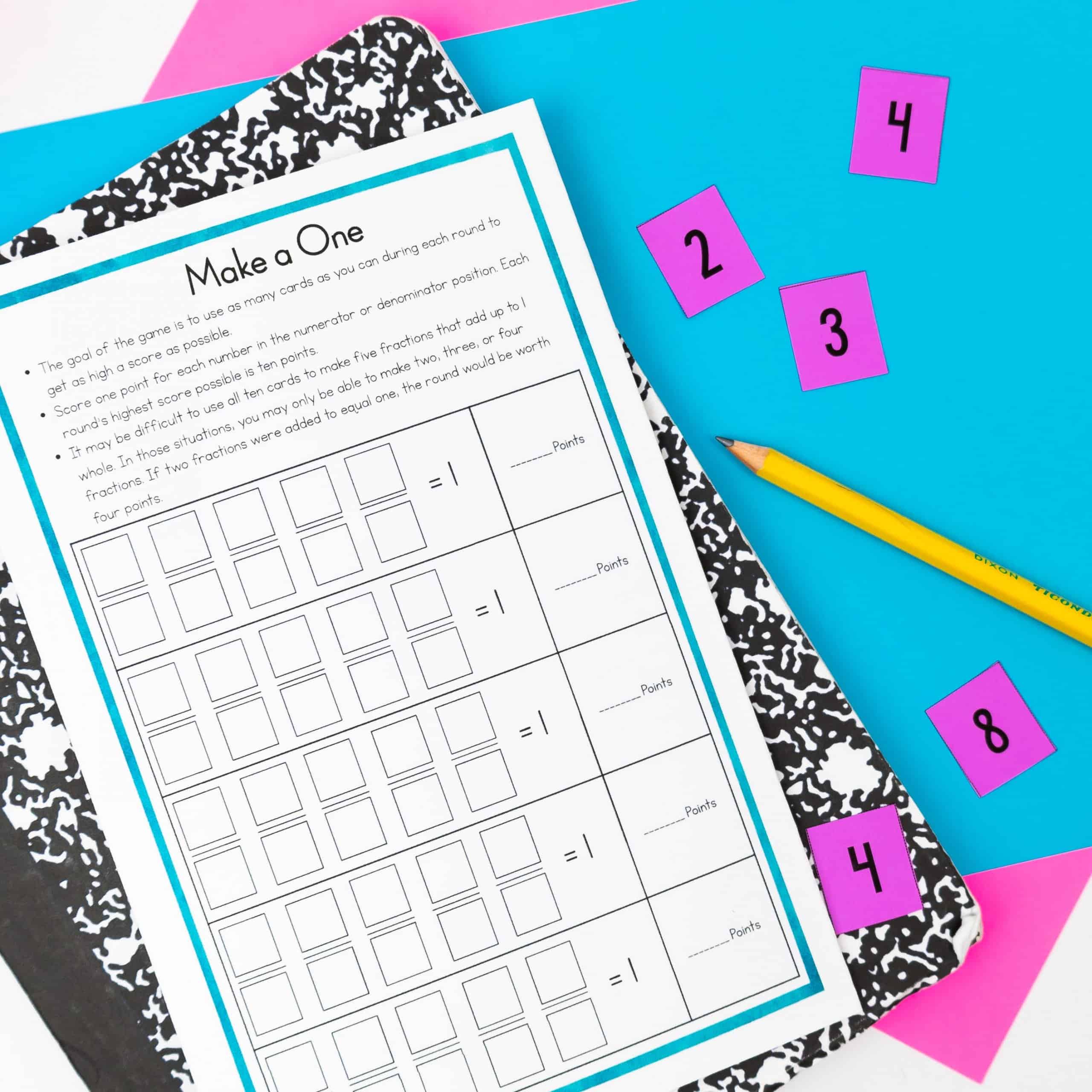
Fraction Rows
The goal of the game is to fill every square in a row with fractions in order from least to greatest. Player 1 and 2 take turns to select a card and write the fraction in any place on the Fraction Row sheet. Once a fraction is written on the recording sheet, it cannot be changed or moved. Students continue drawing cards and writing the fractions on a square in the fraction row. As students progress in the game, it will become more and more difficult to find a square in which the fraction will fit. If the student cannot place the fraction they drew, they miss that turn. The first player to fill their row wins that round.
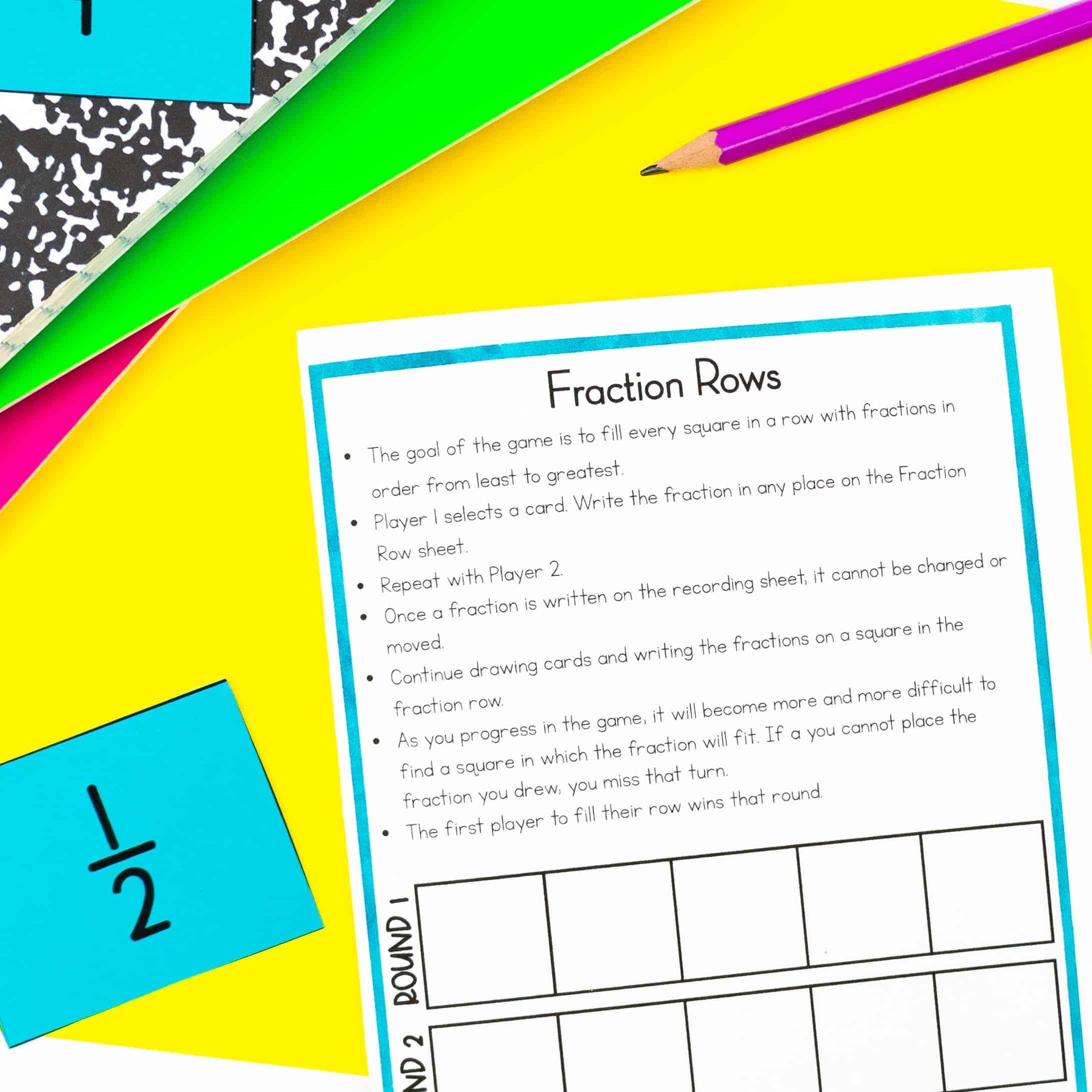
Five in a Row
The object of this game is to capture five spaces in a row. Materials: Students assign themselves a color distinguish their squares. If students use counters, rather than coloring in the squares students can play the game again. Students should draw a card and find an equivalent fraction on the game board and color (place their counter) on that fraction on the game board. The first player to make five spaces in a horizontal or vertical row wins.
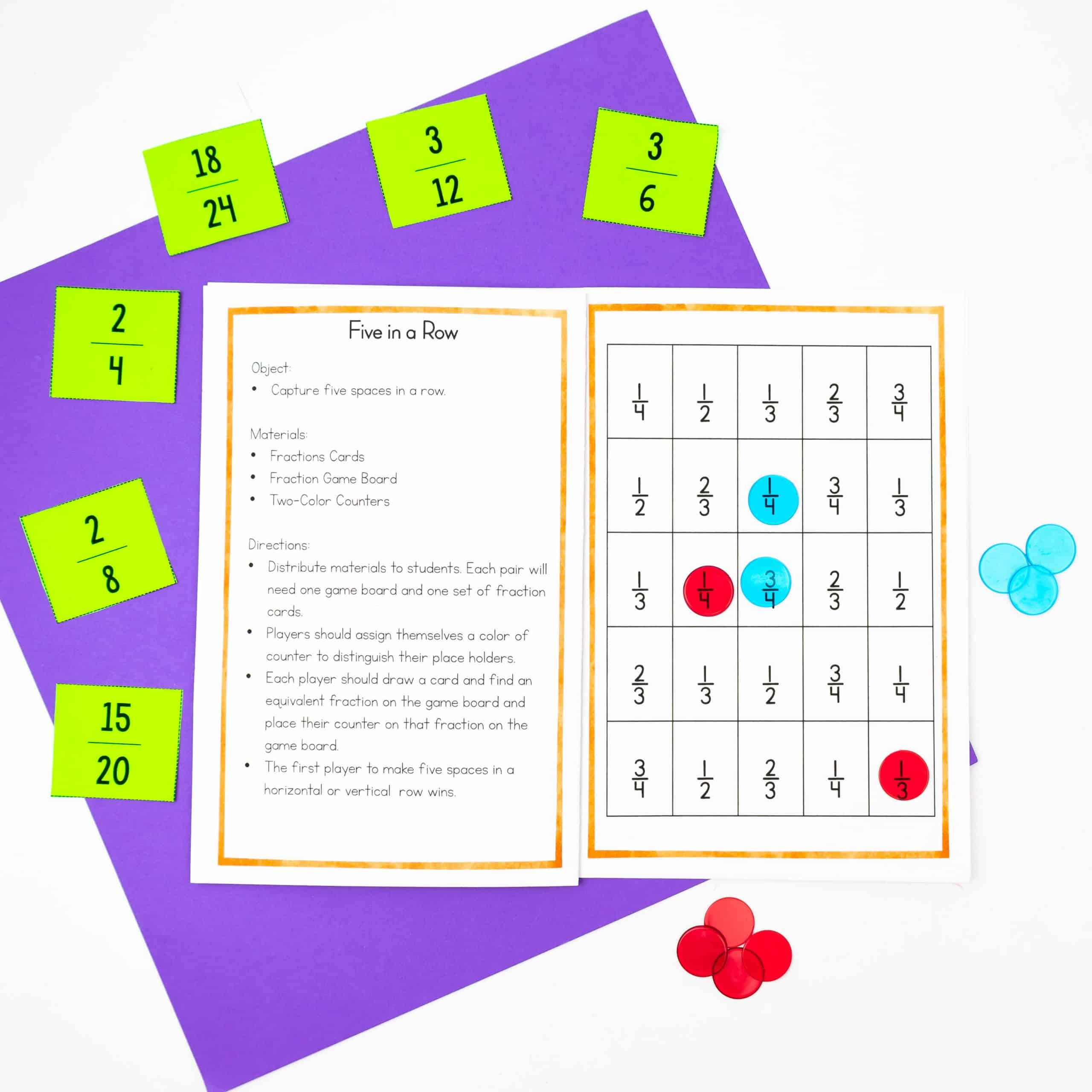
Problem Solving
While I know it’s not a game, I love throwing in problem solving activities like this. There is no clear or singular answer, which can frustrate students. However, it’s a good way to teach perseverance and critical thinking.
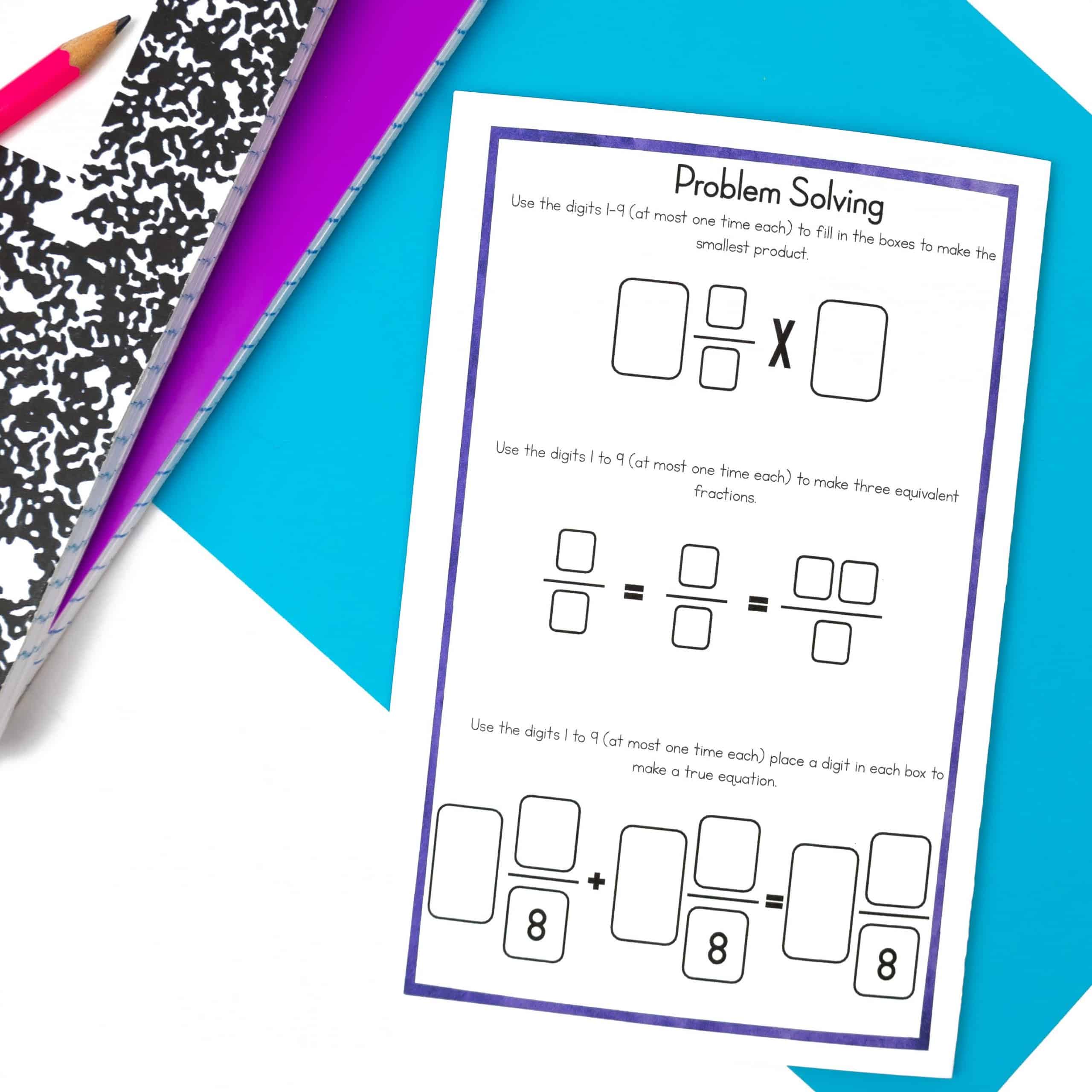
Rolling Fractions
Students roll two dice and use the digits rolled to write a fraction with the greatest possible value. The player with the greatest value receives a point, and the first player to reach 10 points wins.
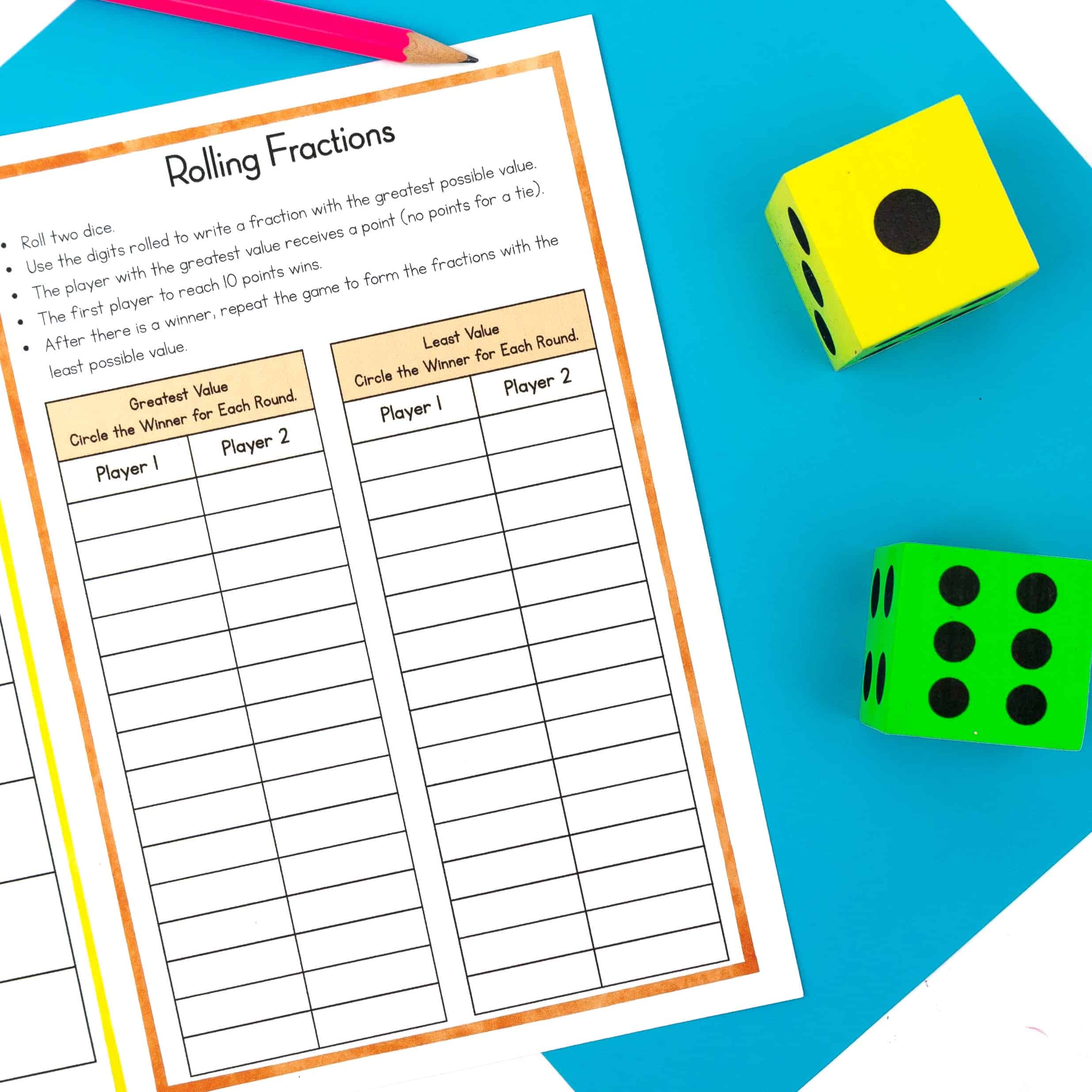
You can get this resource, and many others, as a part of a March Math-ness event. You can find it here!
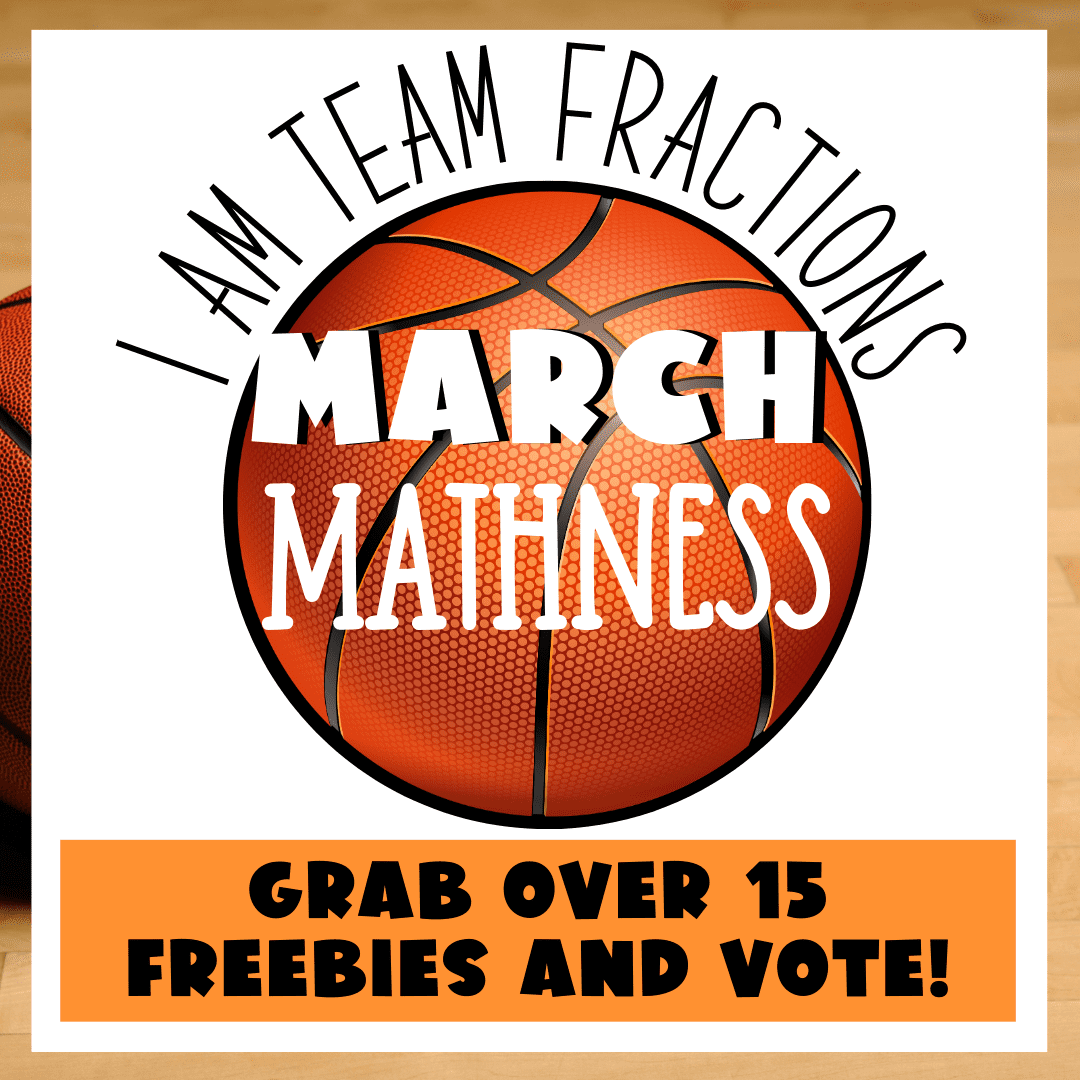
Related Posts
